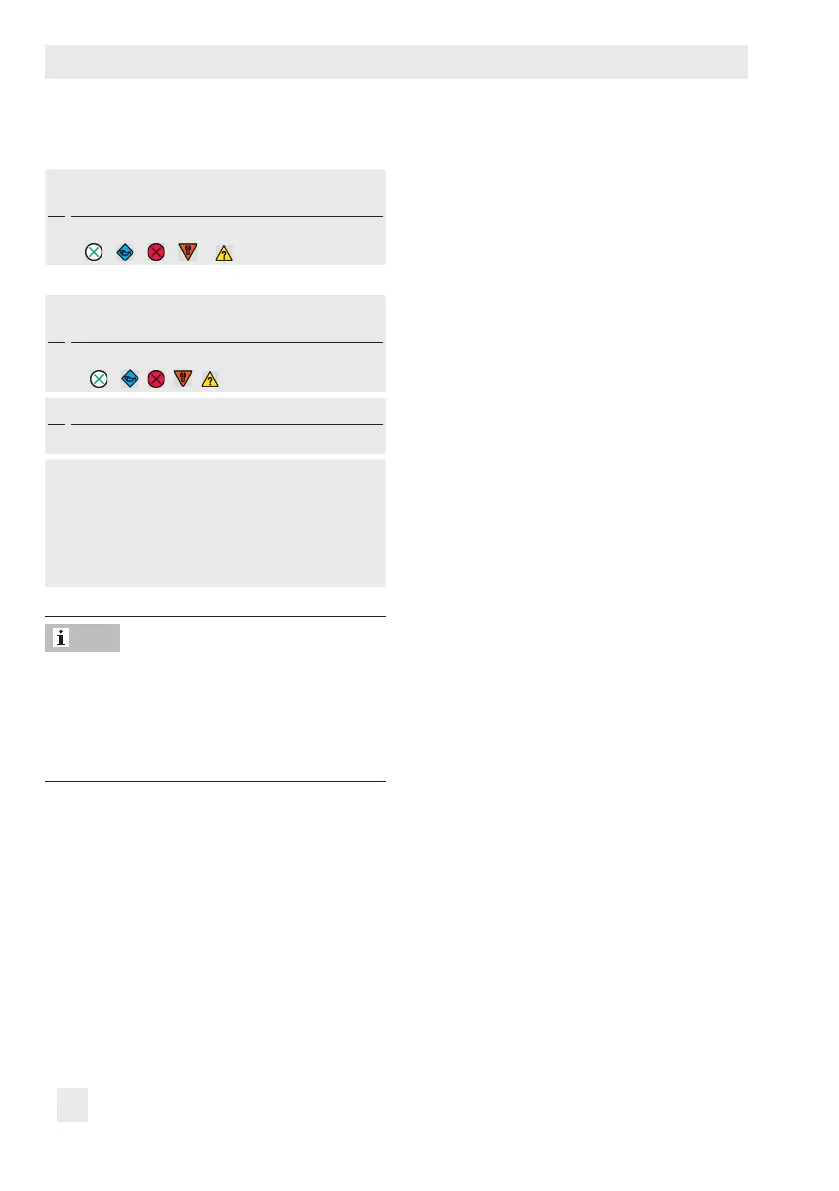88 EB 8389 EN
Tests
Types3730-2/-3/-4/-5 (1.5x) and Type3731-3:
4.
Settings > Positioner > Error control >
Classication report > Extended > PST/FST
− PST/FST - Status active:
, [ ], , ( ), ( )
Type3730-5 (1.6x) and Type3731-5:
4.
Settings > Positioner > Diagnosis
conguration > Classication
− PST/FST:
[
], , , ,
5.
Diagnosis > Tests > Full stroke test
− Start test
1)
Types3730-4/-5 and Type3731-5:
Operation > Operating mode > Positioner
(AO, TRD)
2)
Default setting depending on version
3)
Not Types3730-2/-3 and Types3731-3/-5
Cancel the test by right-clicking 'Stop test'
and selecting 'Execute' or by pressing the ro-
tary pushbutton at the positioner. After the
test has been canceled, the positioner re-
mains in manual mode.
Note concerning setting the FST diagnostic
parameters
− The 'Ramp time (rising)' must be greater
than the corresponding value for 'Mini-
mum transit time close' (Code 41) deter-
mined during initialization.
− The 'Ramp time (falling)' must be greater
than the corresponding value for 'Mini-
mum transit time open' (Code 41) deter-
mined during initialization.
− The 'Scan rate' must not be lower than
the indicated 'Min. recommended scan
rate'. The 'Min. recommended scan rate'
is calculated from the 'Duration of the
test'.
5.5.1 Analysis and monitoring
The analysis of the last three full stroke tests
are saved with a time stamp in the Analysis
of measured data folder.
Test completed successfully
When a full stroke test has been completed
successfully, the analyzed parameters are
displayed separately for the increasing and
decreasing characteristics.
Analysis of measured data (step response
test):
− 'Overshooting' (relative to the step
height) [%]
− 'Dead time' [s]
− 'T63' [s]
− 'T98' [s]
− 'Rise time' [s]
− 'Settling time' [s]
Analysis of measured data (ramp test):
− 'Overshoot' (relative to the step height)
[%]
The results of the rst full stroke test are used
as the reference measurement.
Note

